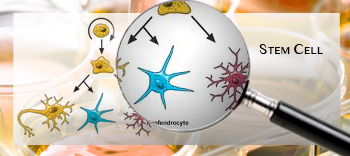Stem Cell Research
We all begin as stem cells. Very early during development, a small population of cells, called embryonic stem cells, hold the potential to become almost every type of cell in the body. In 2006, a group of researchers in Japan reported a way to convert cells from the skin back into stem cells. The conversion process enables neurons to be made from stem cells derived from the skin of a person with autism. This groundbreaking study removed a difficult obstacle to ASD research—studying the neurons of a person with autism—by enabling neurons to be grown from stem cells in a petri dish. Scientists are now using stem cells to investigate the inner workings of neurons from people with autism to develop new, individualized diagnostic and therapeutic tools.
Key Points
- Stem cells are capable of becoming many cell types in the body, including neurons and other types of cells in the brain.
- The ability to generate induced pluripotent stem cells (iPSCs) from the fibroblasts of human patients and subsequently differentiate them into particular cell types has allowed researchers a means to bridge the gap between cellular phenotype and clinical phenotype.
- iPSC technology have been used to generate and examine cellular defects in neurons from patients with monogenic syndromes associated with ASD, such as Rett syndrome and Timothy syndrome.
- Stem cell research can be used in drug screening of iPSC-derived brain cells from ASD patients and in the potential development of individualized therapies.
Misconception
Embryonic stem cells are taken from eggs that have been fertilized within a woman’s body.
Fact
Embryonic stem cells are derived from donated preimplantation embryos that have been fertilized outside of the body in fertilization clinics.
Read about other misconceptions.


